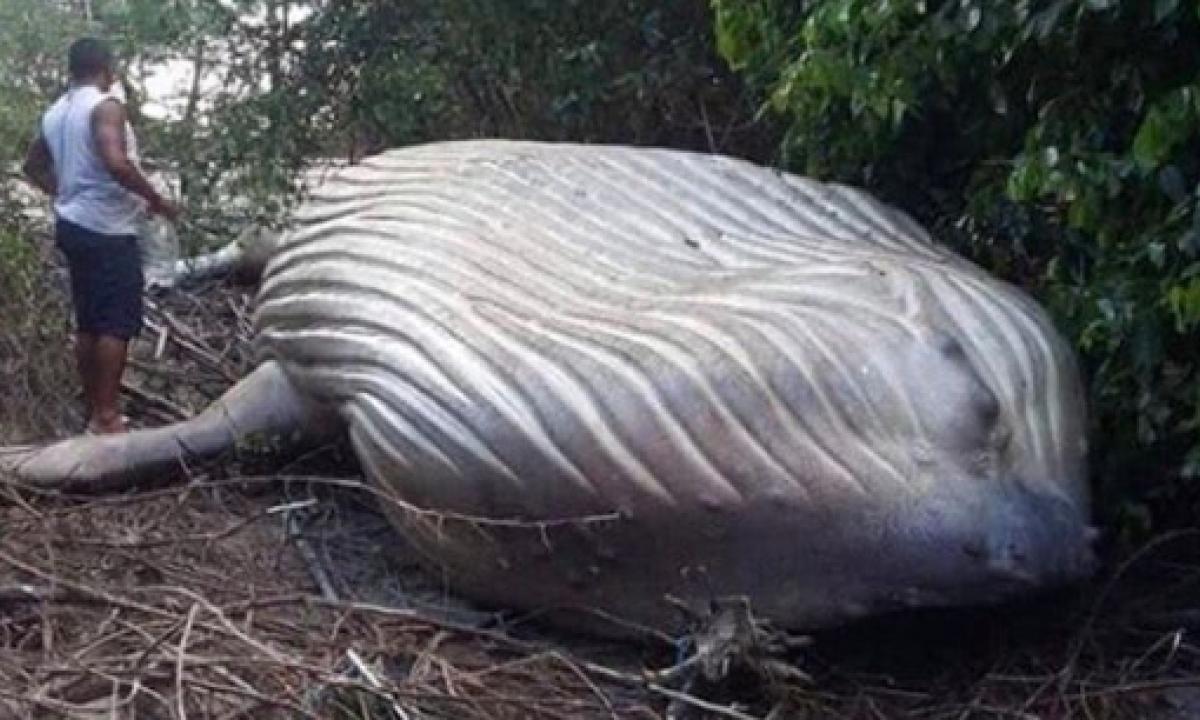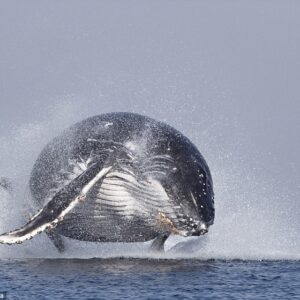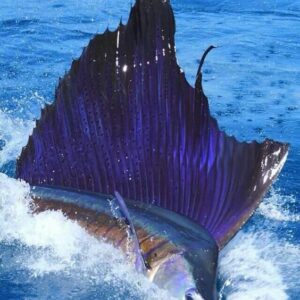A 36-foot-long whale (yes, a whale) was recently discovered in Brazil’s remote jungle, miles from its natural habitat, when scavenging vultures alerted local officials with their screeching.
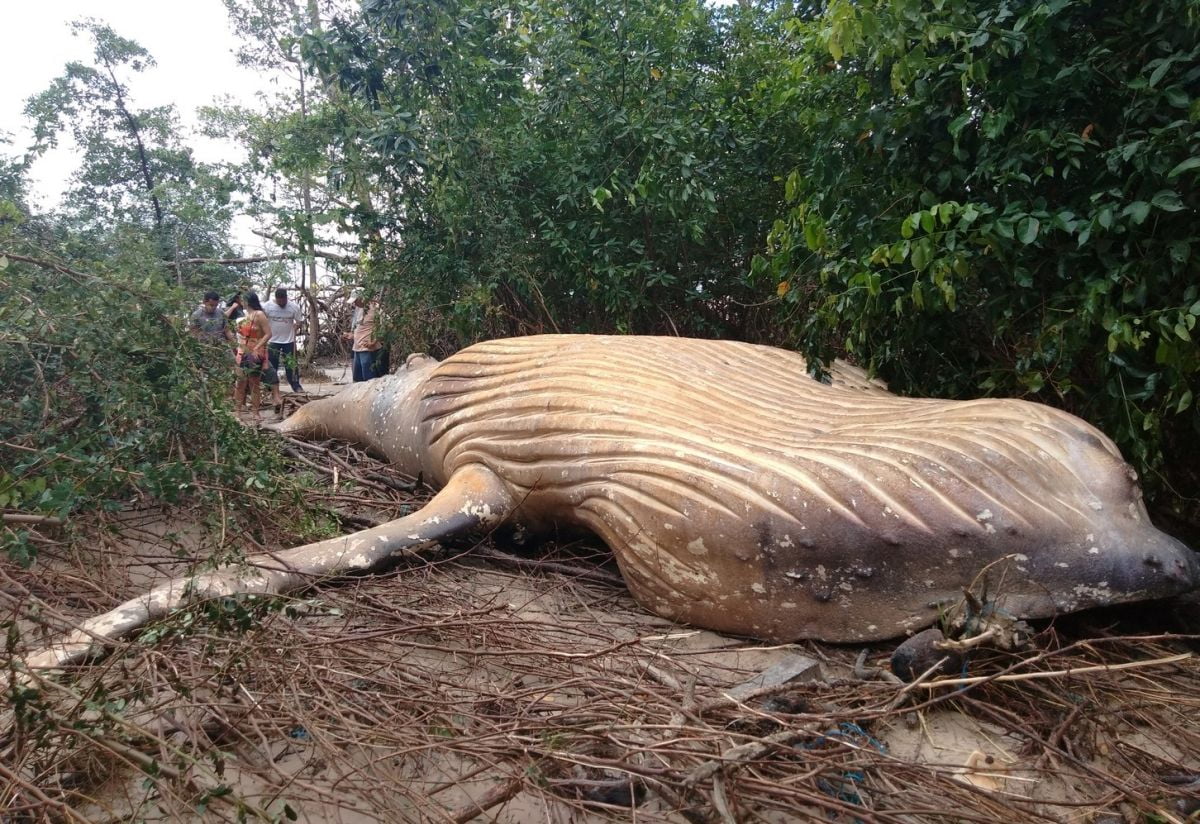
Image credit: Bicho D’agua Institute/Facebook
It’s no news that the Amazon rainforest teems with life, but one recent discovery left even seasoned wildlife experts and biologists baffled. In the undergrowth of Brazil’s Marajó Island, they found nothing less than the carcass of a 10-ton humpback whale.
Preliminary theories suggest that the whale washed ashore during a storm or that it was already dead when rising tides carried it on land. However, scientists are confused as to how it managed to travel so far inland, or why it was swimming off the Marajó coast at all.
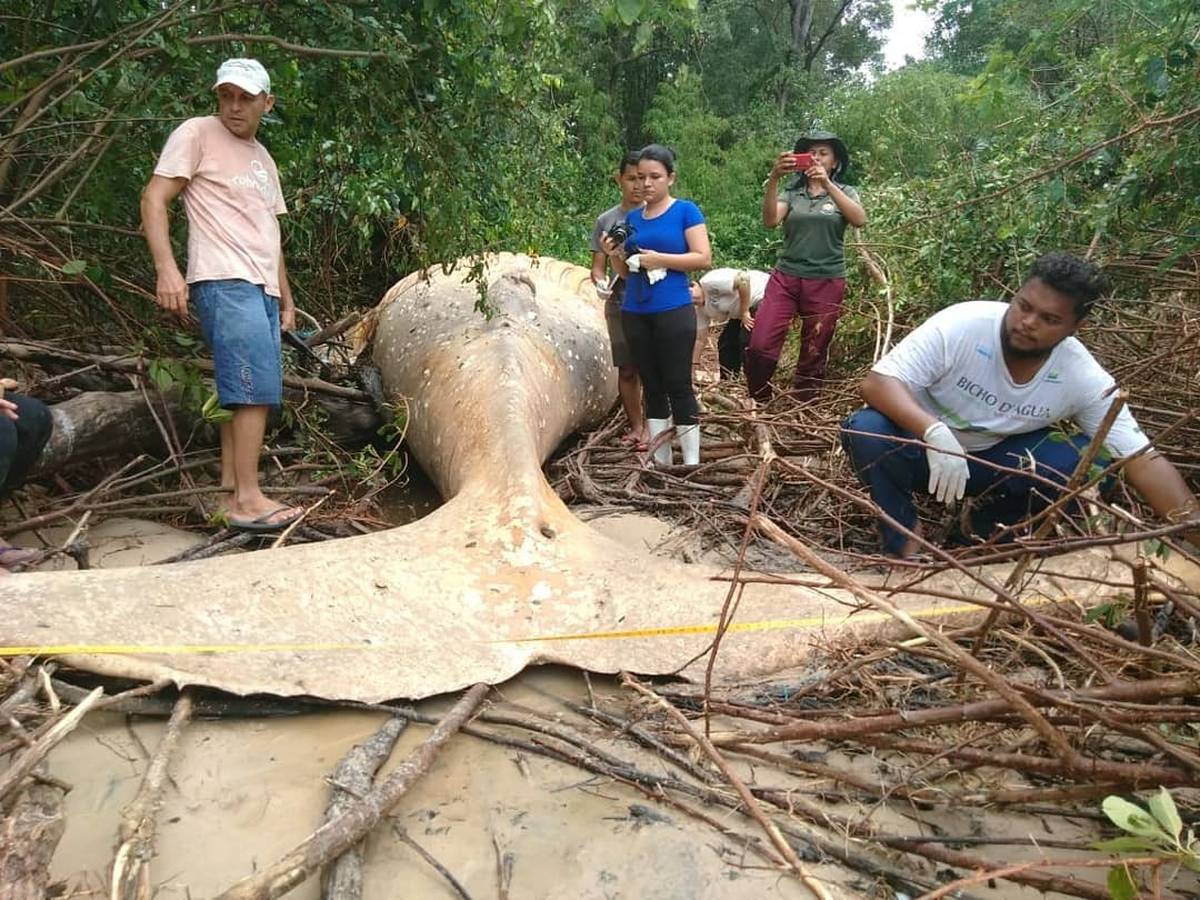
Image credit: Bicho D’agua Institute/Facebook
Marine specialists from local conservation group Bicho D’agua Institute are now examining the carcass, with preliminary assessments suggesting that the young whale died a couple of days before being found some 50 feet from the shore. Project leader Renata Emin is captivated by the mammal’s discovery and intrigued about its journey.
“We’re still not sure how it landed here, but we’re guessing that the creature was floating close to the shore and the tide, which has been pretty considerable over the past few days, picked it up and threw it inland, into the mangrove,” she noted.
“Along with this astonishing feat, we are baffled as to what a humpback whale is doing on the north coast of Brazil during February because this is a very unusual occurrence,” she added.
Humpback whales are typically found in late summer and fall seasons, yet much farther south. They only venture north to the mouth of the Amazon River on very rare occassions. Emin suggested that the young animal was separated from its mother, but the cause of death is still unknown.
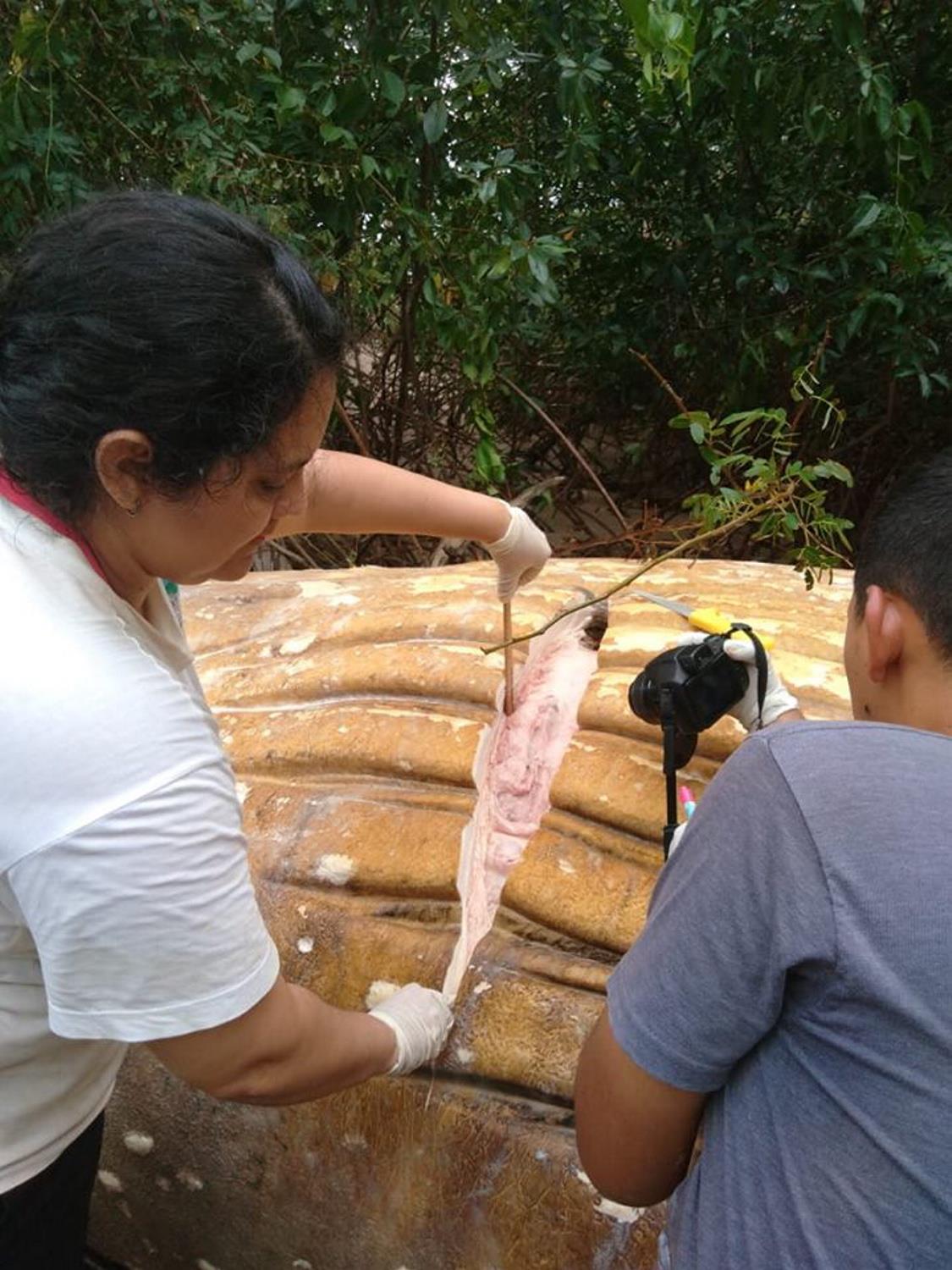
Image credit: Bicho D’agua Institute/Facebook
“Depending on the state of decomposition, some information may already have been lost,” said Emin. “We are collecting as much information as we can get and identifying marks and wounds on its body to see if it was caught in a net or hit by a boat.”
State department official Dirlene Silva explained that access to the carcass and the region where it was found is so challenging that it had to be pulled apart and examined on the spot.
“It’s very difficult to get there and there’s no way we can send a bulldozer because it would not get through,” said Silva. “There is no way to remove it. To get there, we need to cross the swamp.”
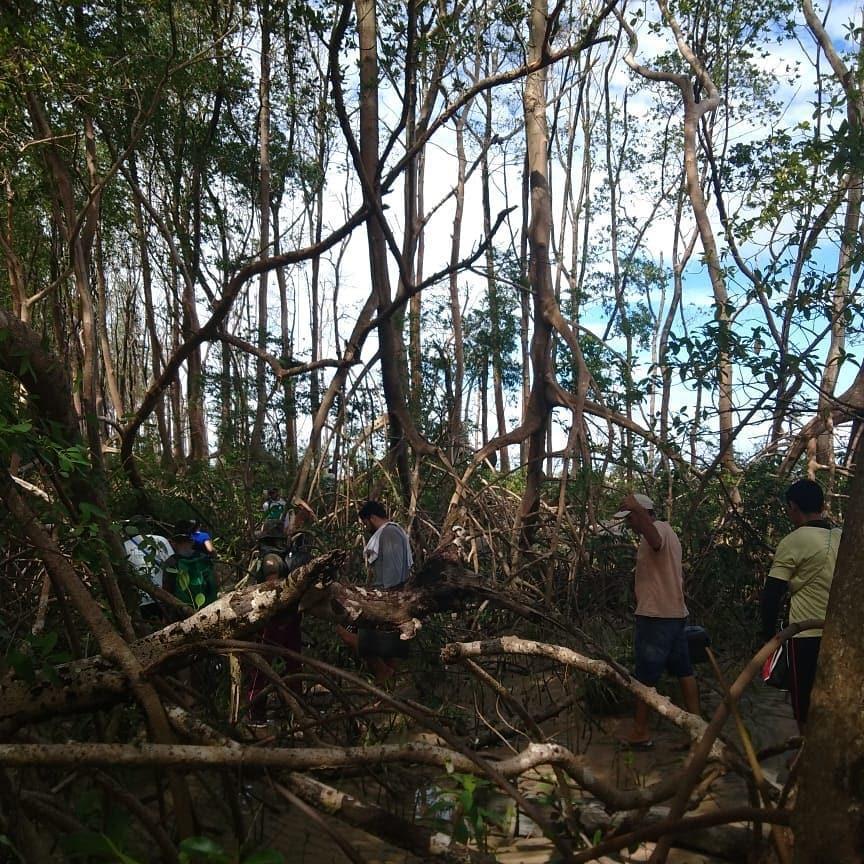
The area where the carcass was found. Image credit: Bicho D’agua Institute/Facebook
Due to the size, weight and location of the carcass, for now there are no plans to remove it. Instead, researchers intend to bury most of it, while the skeleton will be sent to the Goeldi Natural History Museum in Belem for future studies.
Hopefully, this will be a step towards revealing what exactly happened to this unfortunate baby humpback – but for now, noone knows for sure.
